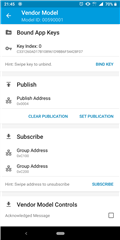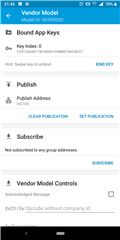Based on Mesh SDK 2.1.1.
I use light switch proxy client & proxy server to test server publish function.
But when I use the phone setting network, I found that the client's publish & subscribe settings, the server's publish function can be used correctly.
If the client only sets subscribe and doesn't set publish,the server's publish function can't be used.
Can I set the client's subscribe and server's publish separately to use the publish function?


left figure : client set publish & subscribe
right figure : client only set subscribe

figure : server set publish



